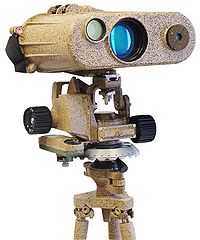
Photo from wikipedia
The surface engineering of metals develops high technology to detect microscale convex, concave and flat surface patterns. It is because the manufacturing industry requires technologies to recognize microscale surface features.… Click to show full abstract
The surface engineering of metals develops high technology to detect microscale convex, concave and flat surface patterns. It is because the manufacturing industry requires technologies to recognize microscale surface features. Thus, it is necessary to develop microscopic vision technology to recognize microscale concave, convex and flat surfaces. This study addresses microscale concave, convex and flat surface recognition via Hu moments’ patterns based on micro-laser line contouring. In this recognition, a Hu moments’ pattern is generated from a Bezier model to characterize the surface recovered through microscopic scanning. The Bezier model is accomplished by employing a genetic algorithm and surface coordinates. Thus, the flat, convex and concave surfaces are recognized based on the Hu moments’ pattern of each one. The microscope system projects a 40 μm laser line on the object and a camera acquires the object’s contour reflection to retrieve topographic coordinates. The proposed technique enhances the microscale convex, concave, flat, and surface recognition, which is performed via optical microscope systems. The contribution of microscopic shape recognition based on the Hu moments’ pattern and microscopic laser line is elucidated by a discussion based on the microscopic shape recognition performed through the optical microscopic image processing.
Journal Title: Metals
Year Published: 2023
Link to full text (if available)
Share on Social Media: Sign Up to like & get
recommendations!